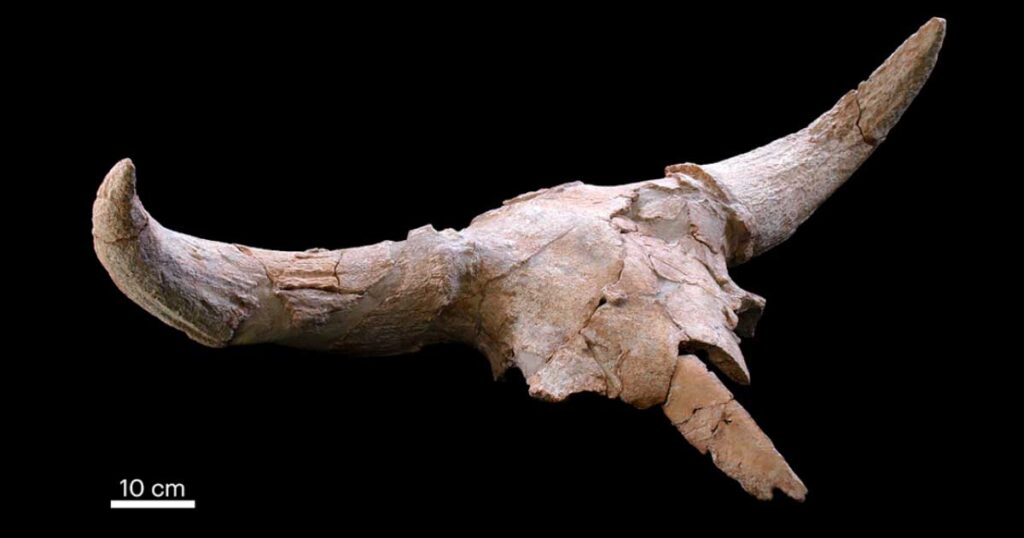
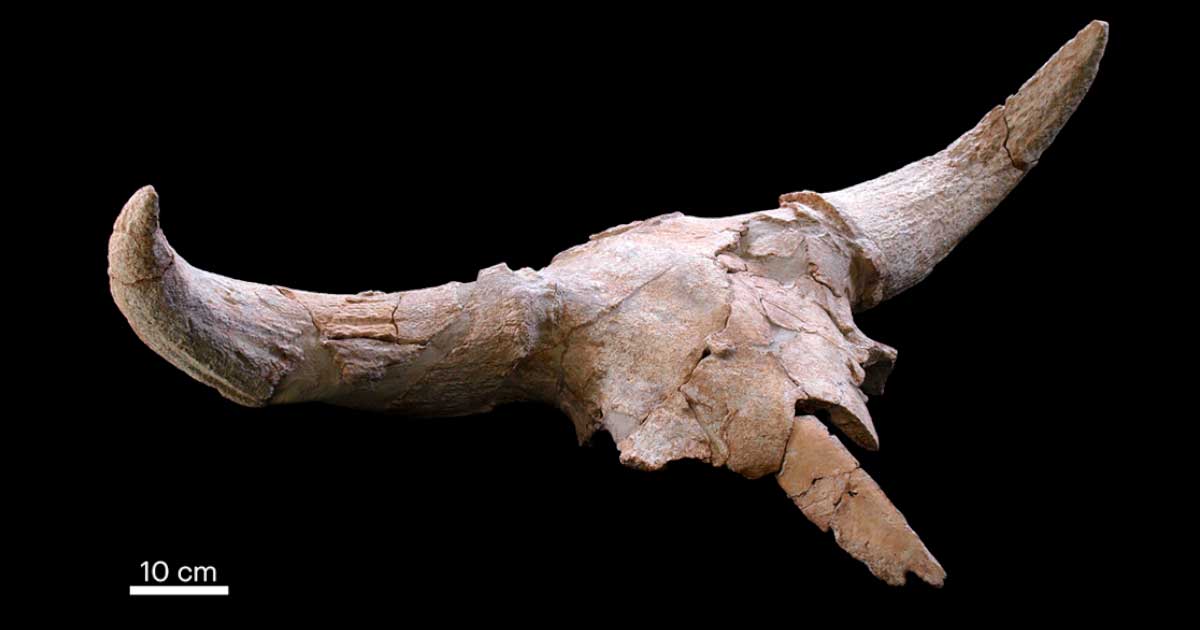
As the data continues to accumulate, it becomes more and more clear that Neanderthals were highly intelligent hominins who built their own unique and remarkable culture. Some of the latest confirmation of this fact has been provided by a team of archaeological researchers from Spain, who recently excavated an expansive collection of huge animal skulls arranged inside a Neanderthal cave north of Madrid.
“There have been discoveries of up to 35 crania of large herbivores, which were arranged in an area where the cave enlarges,” said study lead author Enrique Baquedano, when discussing the animal skulls in an interview with Newsweek. “The dates of the level three, where the remains have been found, are around 42,000 years old.”
Based on the size of the collection, the researchers are convinced the animal skulls were gathered and displayed in a manner reflecting some type of symbolic intent or spiritual belief system. The implications of this are ground-breaking, as it would mean that Neanderthals used the animal skulls for ritualistic and symbolic purposes.
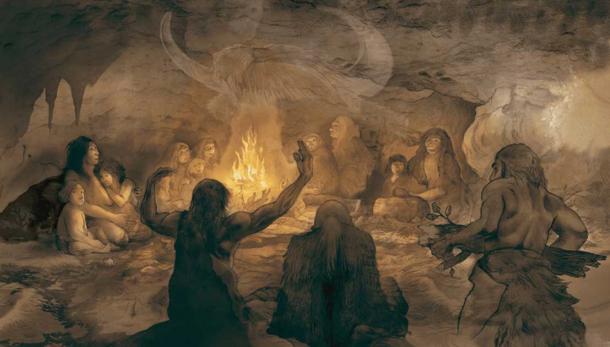
Could Neanderthals really have used animal skulls as part of symbolic and ritual behavior? (Albert Alvarez Marsal / Museo de la Evolución Humana)
Neanderthal Caves Hold All the Secrets
Often referred to as a “cousin” of modern humans, the Neanderthals occupied the lands of Eurasia up until approximately 40,000 years ago, when they finally went extinct. Despite their long-ago disappearance, archaeologists and anthropologists have learned a lot about Neanderthal physiology and behavior, from discoveries of skeletons and artifacts found at various sites.
A good percentage of these artifacts have been found in Neanderthal caves. One such Neanderthal cave is Cueva Des-Cubierta just north of Madrid in Spain. It was here that a team of researchers from Madrid’s Museum of Archaeology and Paleontology, of which Enrique Baquedano is the museum director, discovered the impressive assembly of animal skulls.
Based on some previous findings, the experts believe that this cave was used for ritual purposes by an intergenerational mixture of Neanderthal groups. First discovered in 2009, excavations at Cueva Des-Cubierta have produced a cache of Neanderthal stone tools and bone fragments from both humans and animals over the years.
In the cave’s main gallery, the excavators unearthed the remains of a child, which was eventually identified as Neanderthal. The fact that at least one Neanderthal was buried in the cave suggests it was viewed as a sacred place. The discovery of the carefully collected and arranged animal skulls offers yet more evidence that this was the case.
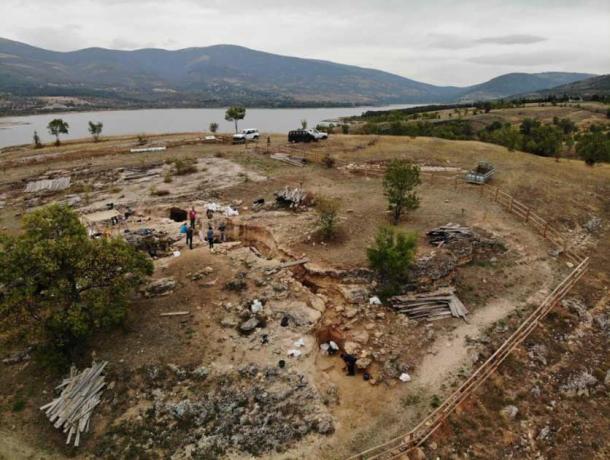
Aerial view of excavation at the Neanderthal cave which revealed the collection of animal skulls which has so excited archaeologists. (Comunidad de Madrid)
Rare Find of Animal Skulls at Cueva Des-Cubierta
If such finds were common at Neanderthal sites, the discovery might not have seemed that notable. But collections of large numbers of animal skulls are not found very often at sites occupied by hunter-gatherers, either ancient or modern. The normal practice of modern hunter-gatherer groups is to dispose of large animal heads in a separate location, since they aren’t generally used as a food source.
“The introduction of the crania, and not of other parts of the carcasses of greater nutritional interest, into the Cueva Des-Cubierta thus seems to have been deliberate and not related to subsistence,” the study authors wrote in a Nature Human Behavior article that introduced the findings of their research. “Rather, it seems more related to their symbolic use.”
Most of the skulls found in the cave came from two species, bisons and aurochs, with the latter representing a wild version of the modern-day cow. The collection also included the skulls of five deer and two rhinos, the latter of which did in fact roam the lands of Europe at one time. “The discovery of big crania of extinct rhinoceros and bison was a source of great satisfaction,” Baquedano said. “I named the first of the rhinoceroses Rosendo in homage to a great Spanish rock musician.”
In addition to the animal skulls of the large herbivores, other animal bones were strewn about the floor on the same excavation level. Most of the bones seem to have been deposited there haphazardly, which makes the arrangement of herbivore skulls stand out even more.
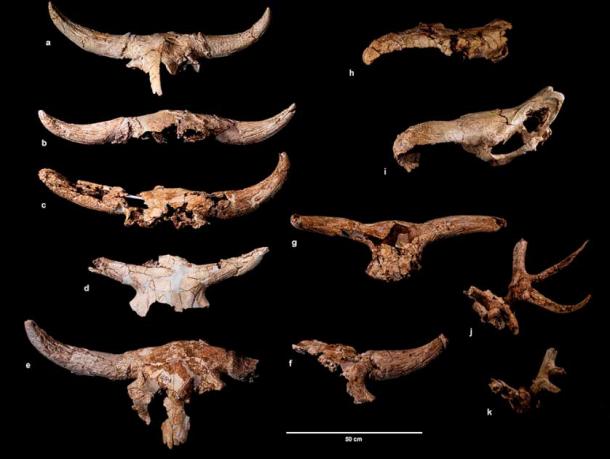
A selection of animal skulls retrieved from the Spanish cave, Cueva Des-Cubierta. (Nature Human Behaviour / CC BY 4.0)
The Neanderthals: A Deeply Spiritual People?
All of the skulls came from animals that had horns or antlers, and all showed signs of having been modified by human hands in some ways (either with tools or through the application of fire). Consequently, the researchers think the animal heads may have been hunting trophies of a sort, which were eventually collected and arranged inside the cave in a deliberate and spiritually meaningful formation, perhaps as a way to ensure future success in hunting endeavors.
The idea may have been to create a hunting shrine, to honor the efforts of the hunters and to thank the spirits that were responsible for providing nature’s bounty. Alternatively, the heads could have been removed from the bodies of the hunted animals and offered to the Neanderthal gods as sacrifices.
The animal skulls were distributed throughout the sediment layer in the section of cave that contained them, arranged in such a way that suggested they had been put in the cave at different times. “[This] indicates that the site’s Neanderthal occupants repeated the same type of behavior over a long period (years, decades, centuries or even millennia),” the researchers wrote in their Nature Human Behavior article.
“[It] suggests the transmission of this behavior between generations, which would be consistent with its interpretation as a cultural phenomenon.” In other words, they were creating a display that was considered sacred or deeply meaningful to the people as a whole, and not just to a specific group of hunters.
Baquedano noted that signs suggesting symbolic meaning or behavior had been found at a few other Neanderthal caves. He mentioned a cave in Italy that held a collection of sheep and goat skulls, and a cave in France in which stone circles had been constructed from stalagmites. But “there is no site like this one,” he said, confirming the unprecedented nature of this exciting discovery.